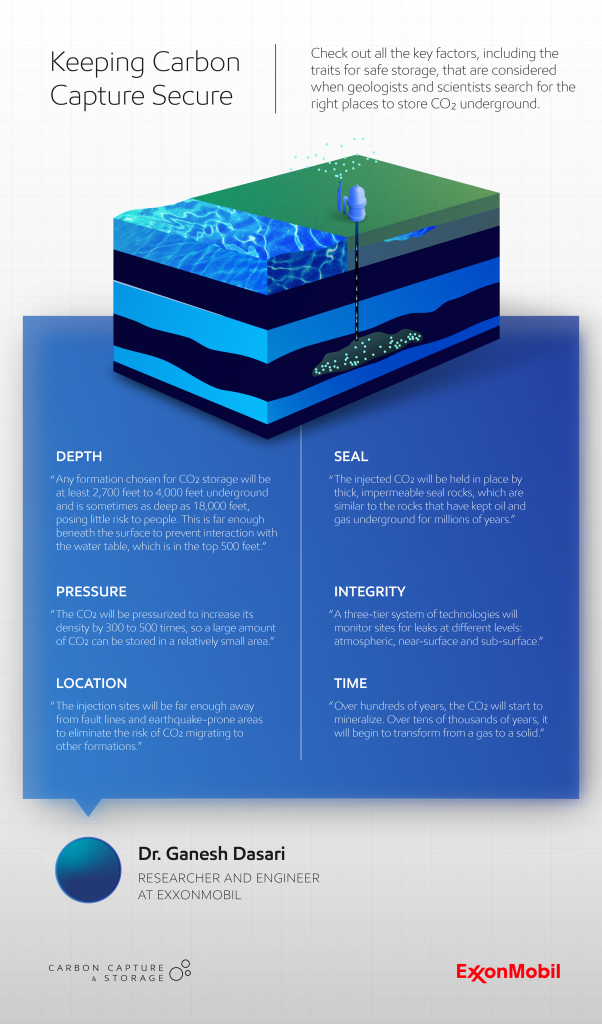One technology, carbon capture and storage (CCS), stands tall for its ability to help energy-intensive sectors like power generation and heavy industry reduce their emissions. In fact, the International Energy Agency has said without CCS, achieving the world’s lower-emission targets will be virtually impossible.
While the technology isn’t new, it is increasingly coming to the forefront of the climate conversation. But what is carbon capture and storage? Check out this handy guide to help you discover more about CCS and how it affects you.
What is CCS?
Carbon capture and storage is the process of capturing carbon dioxide from industrial activity or power plants that would otherwise be released into the atmosphere and then injecting it deep underground for safe, secure and permanent storage.
It has the ability to capture up to 90% of emissions from industrial activities and is one of the few technologies proven to help decarbonize energy-intensive industries, making it a powerful tool in mitigating the risks of climate change.
Experts around the world agree the technology will be key to meeting the Paris Agreement’s emission-reduction goals.
How does it work?
Carbon capture and storage does just what it says it does: It captures carbon and permanently stores it before it can reach the atmosphere. It’s a safe and proven technology.
But that doesn’t mean it’s easy. Separating molecules as small as carbon dioxide requires tremendous precision. For example, carbon dioxide makes up only 4% of the exhaust from natural gas turbines.
What happens to carbon dioxide after it’s captured?
Once captured, the carbon dioxide is typically pushed into a pipeline and sent to injection wells at the storage site. The wells then send the carbon dioxide thousands of meters below the ground or seafloor.
Several factors go into finding the right location to store carbon underground. Learn about a few of them below.
Why does CCS matter?
Heavy-emitting sectors, such as power generation, refining, petrochemical production and industrial manufacturing, make up more than 70% of all global energy-related emissions. In Asia Pacific alone, these industrial emissions reached around 4 billion tonnes as recently at 2019. And as the population and standards of living grow, demand in these sectors is also likely to rise, along with their associated emissions.
CCS could help these industries offset their emissions, while they increase production to meet growing demand. The International Energy Agency says CCS technology will account for up to 15% of the emissions reductions needed to meet global targets in 2050.
In addition to the environmental benefits, CCS has a range of economic benefits. In terms of investment, the International Energy Agency estimates between 70 and 100 CCS facilities need to be built each year by 2050, requiring capital of between US$655 billion and US$1.28 trillion.
What experience does ExxonMobil have when it comes to CCS?
ExxonMobil is the global leader in CCS, having captured more carbon dioxide over the past 30 years than any other company, removing more than 120 million tonnes.
Currently, we capture more than 9 million tonnes of carbon dioxide per year in the United States, Australia and Qatar.
Across Asia Pacific, ExxonMobil has also envisioned the potential for CCS hubs, which would create regional networks that could connect high-emitting industries to world-scale storage. This concept would see carbon capture hubs placed in Southeast Asia’s heavy industrial areas, with their captured carbon dioxide transported to carbon storage sites elsewhere in the region.
With more opportunities to deploy CCS on the horizon, the company is employing its expertise to expand the use of the technology, helping keep the world on the path toward lower emissions.






